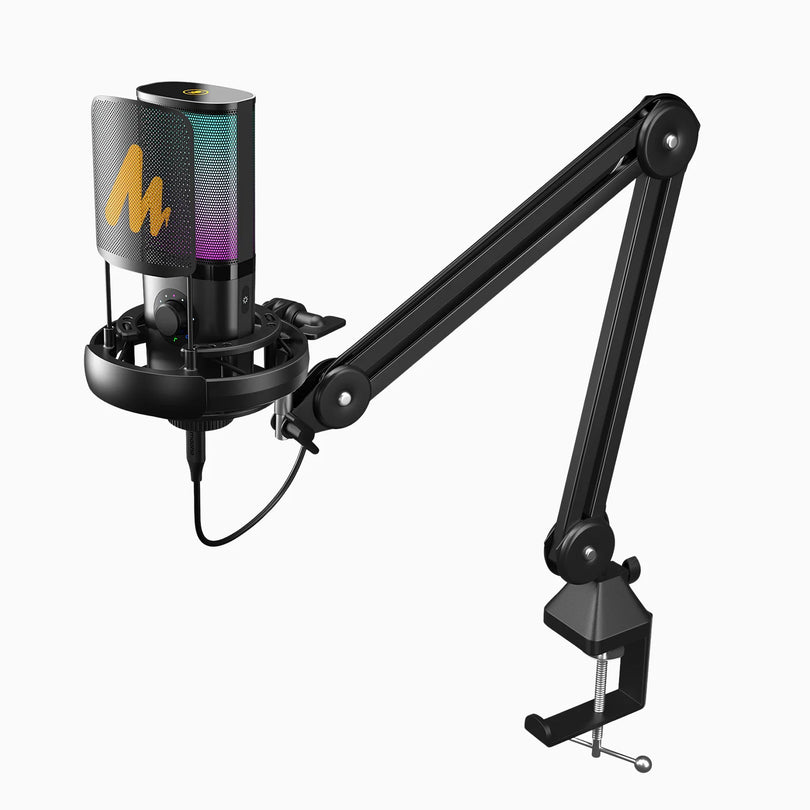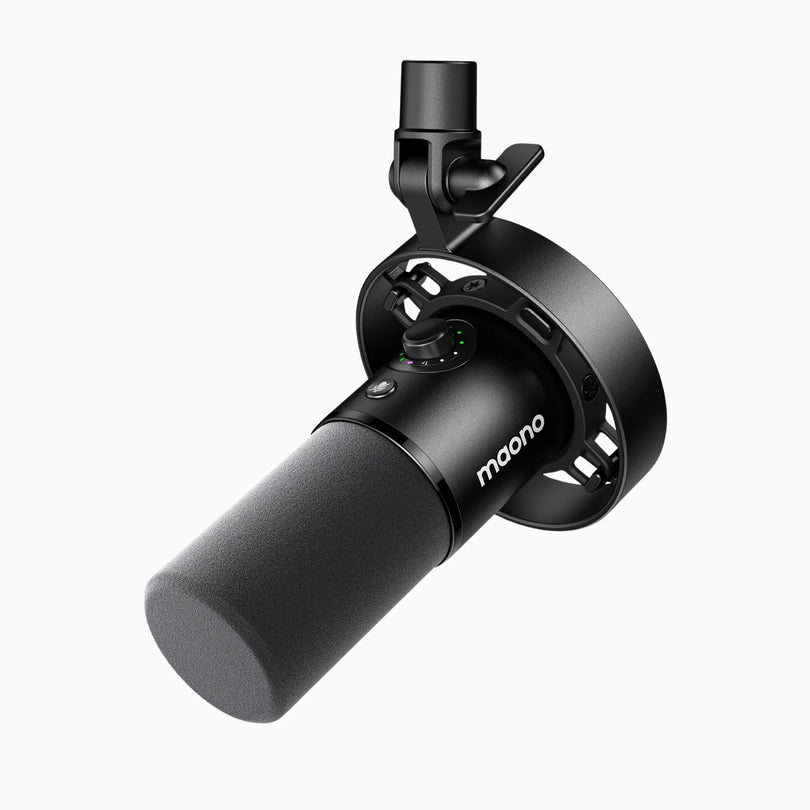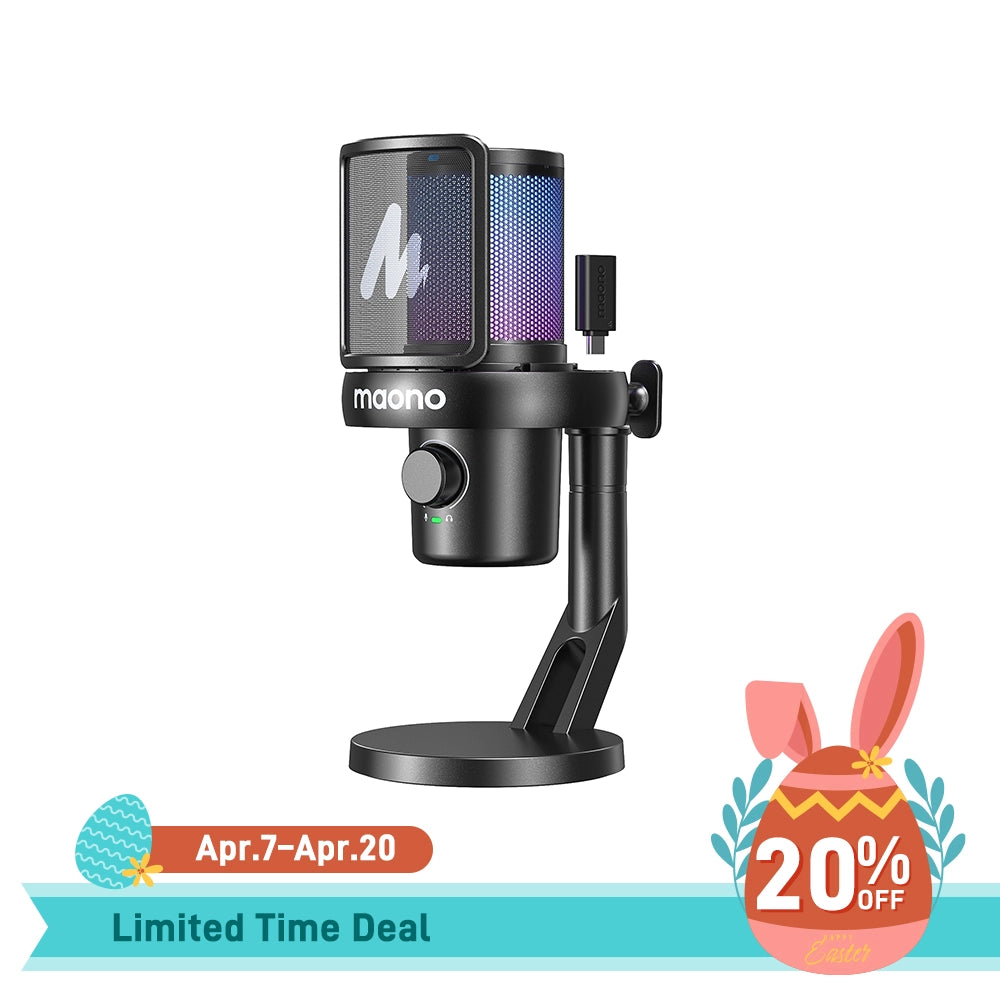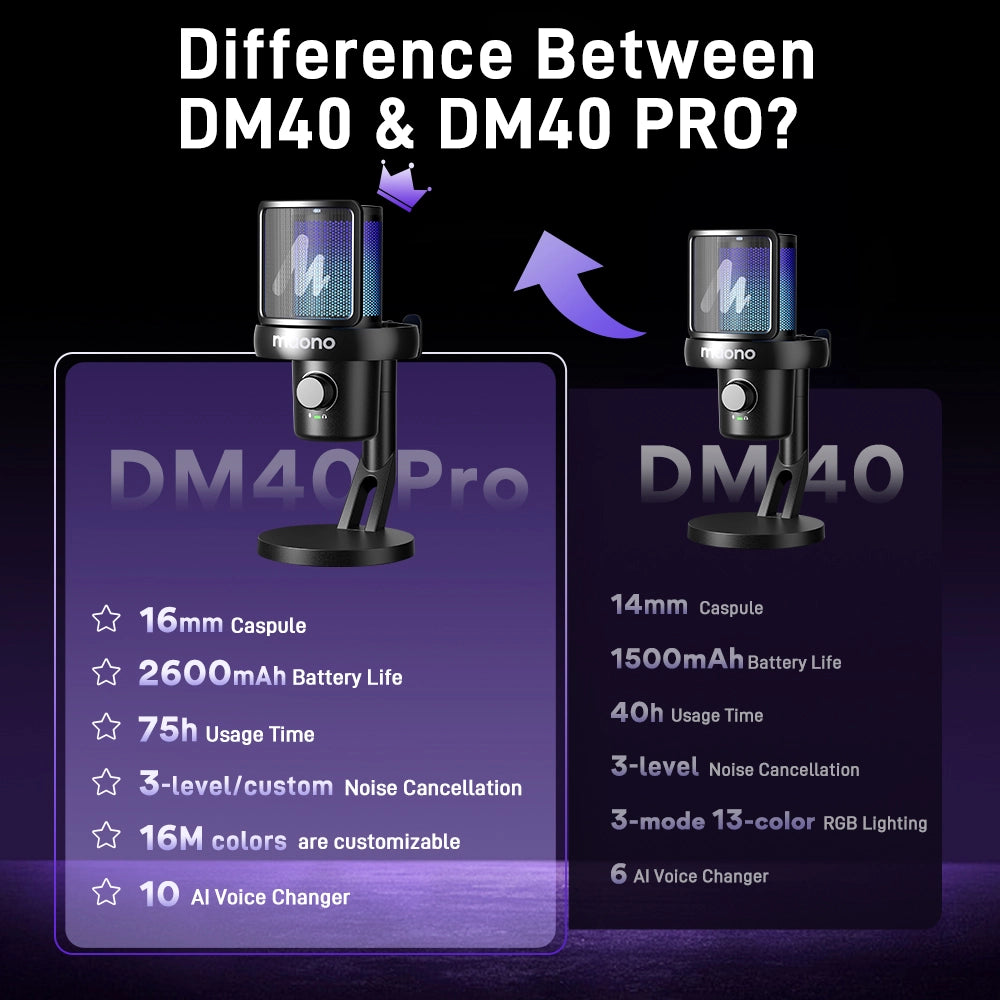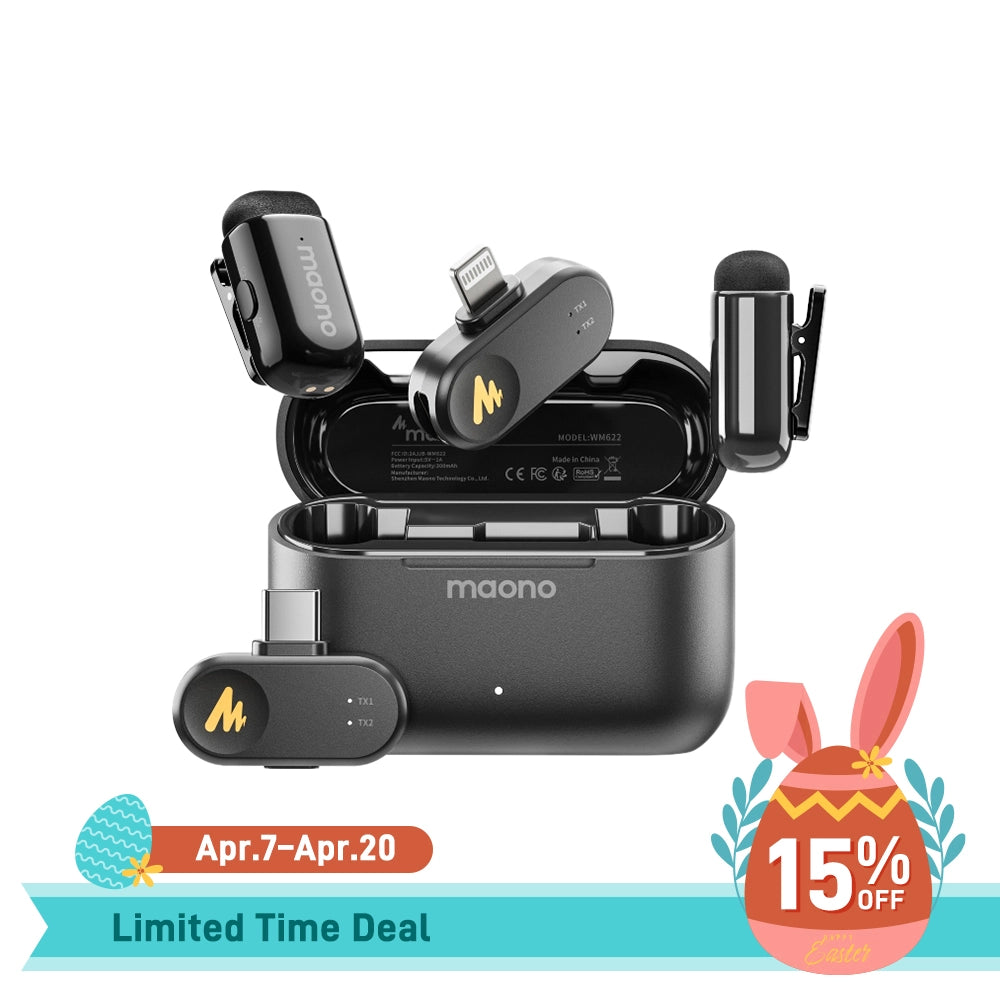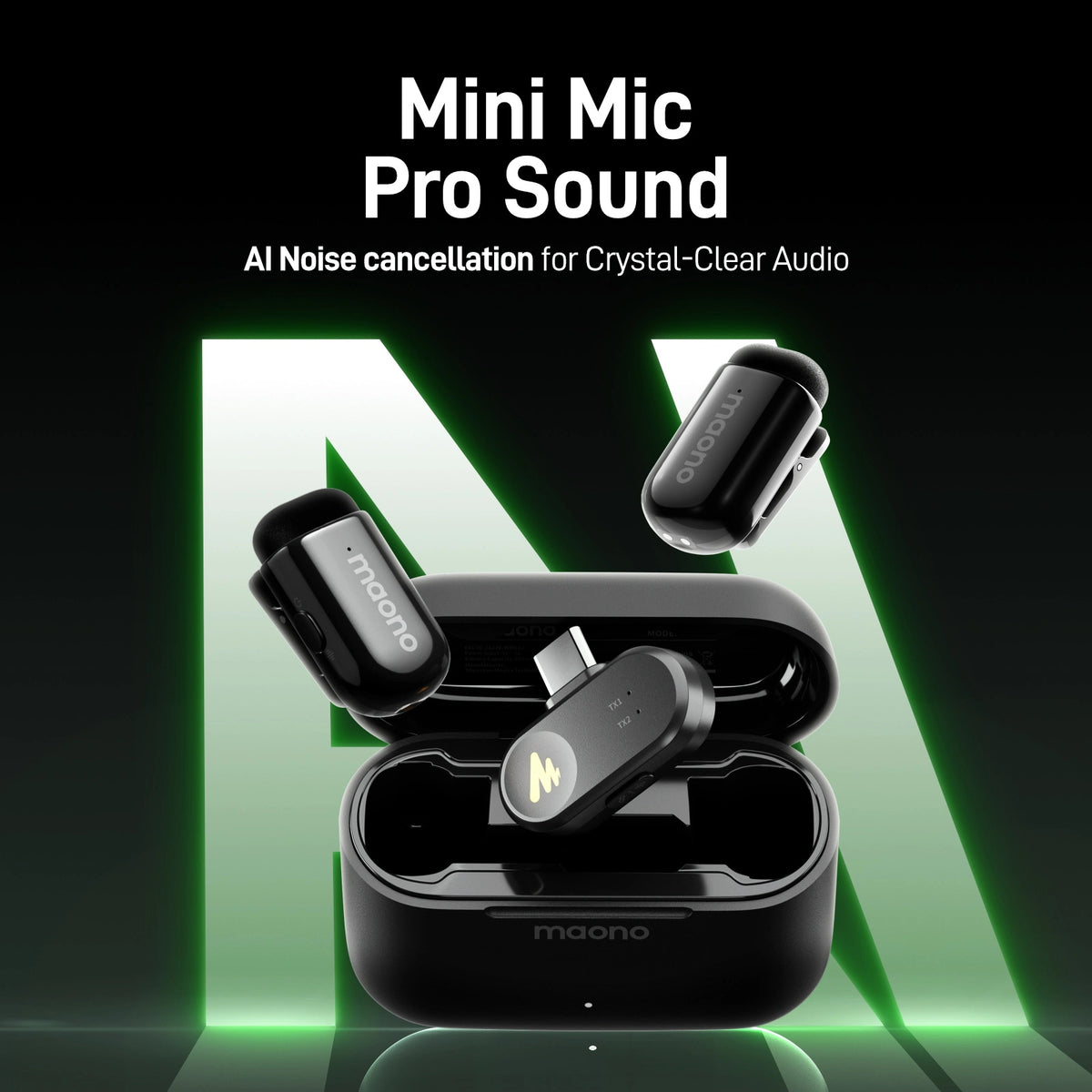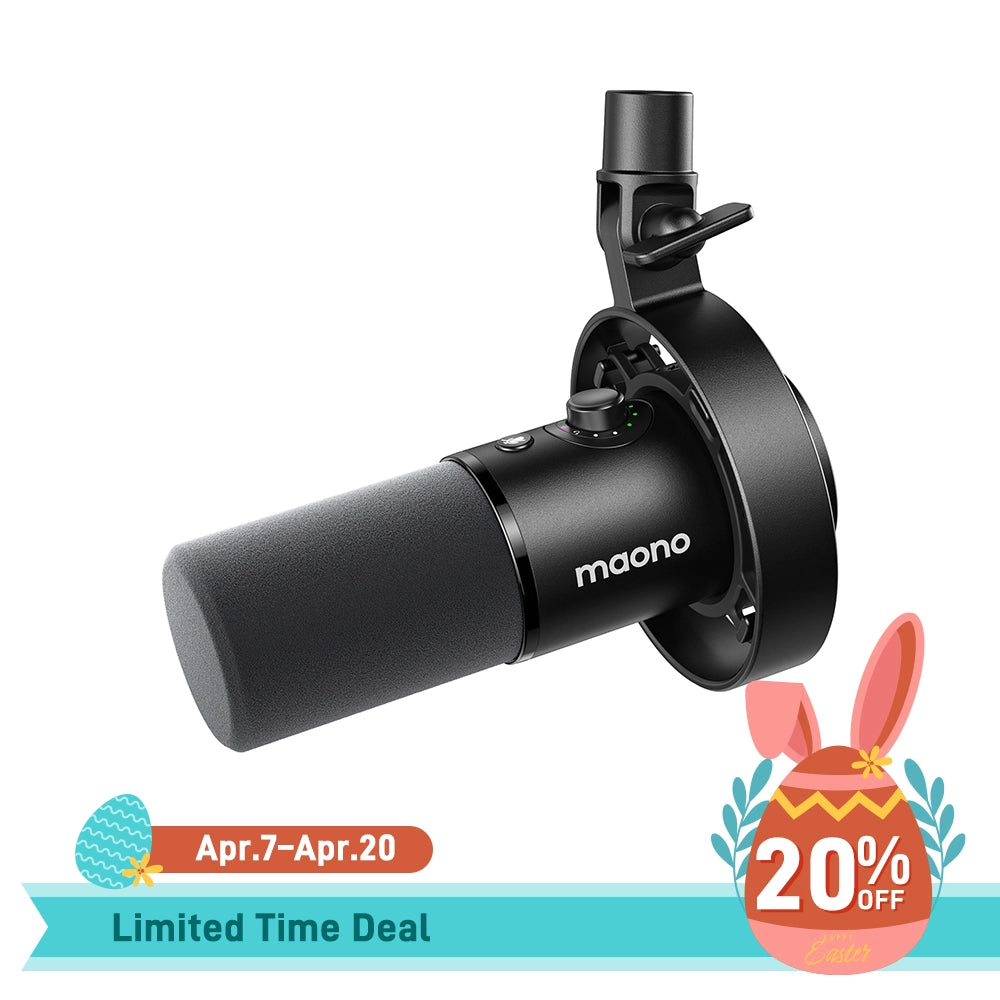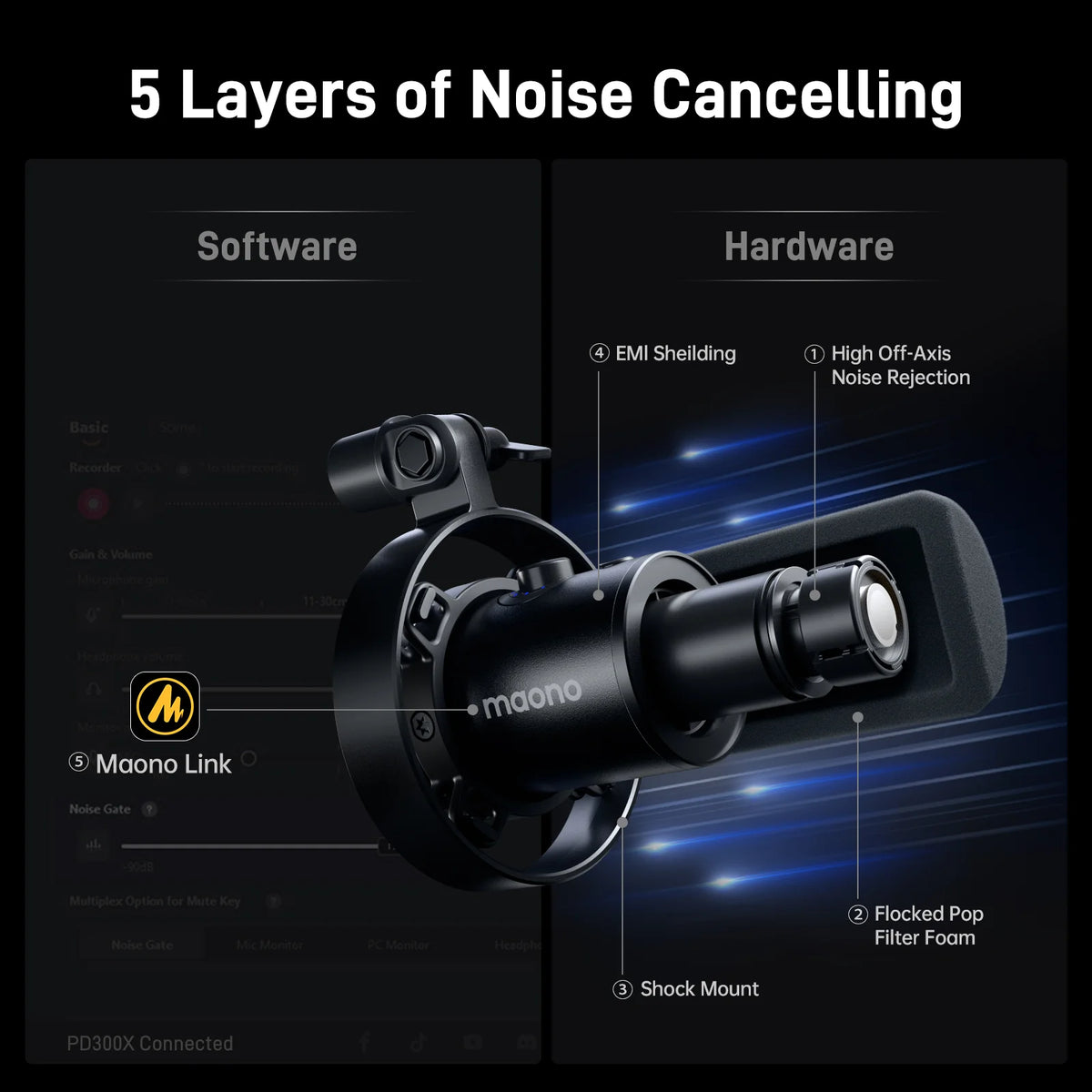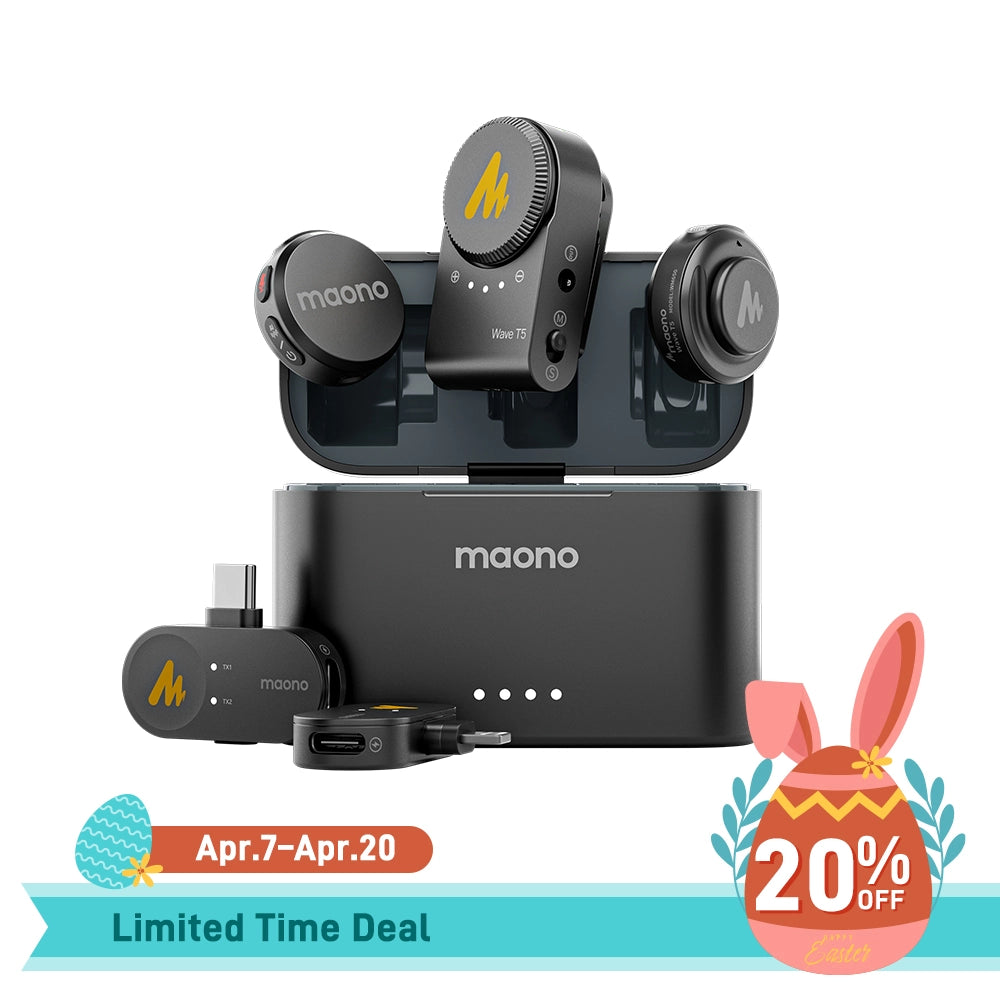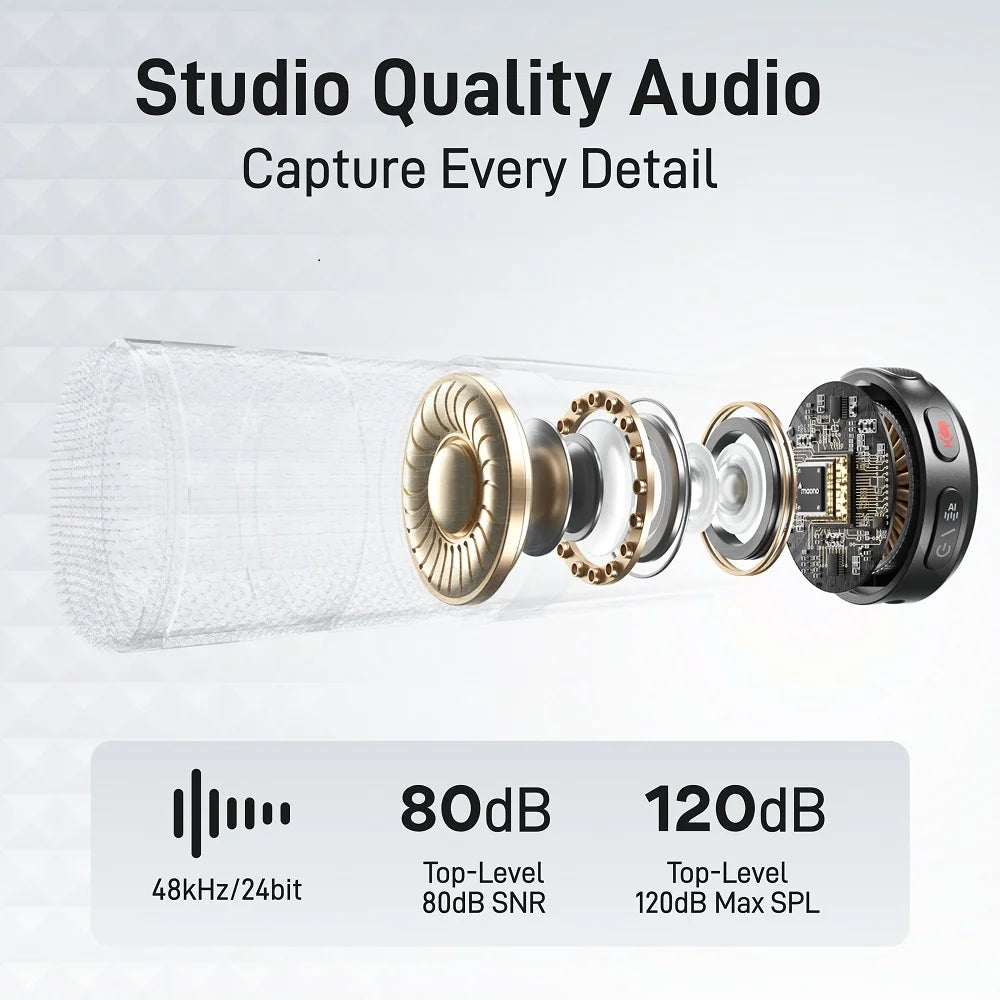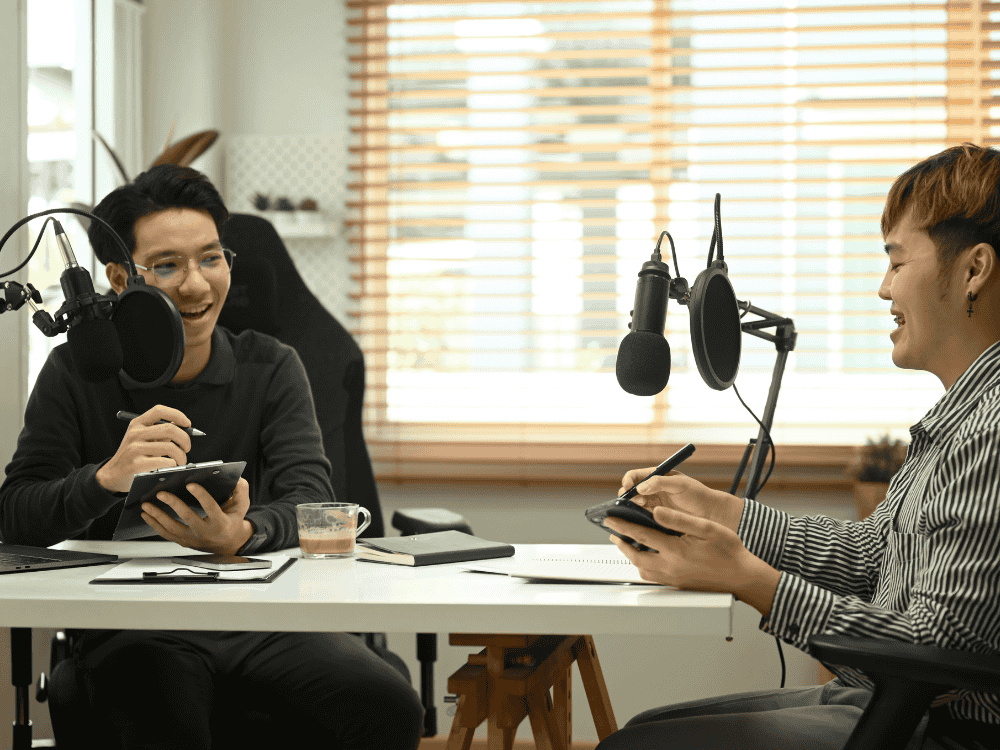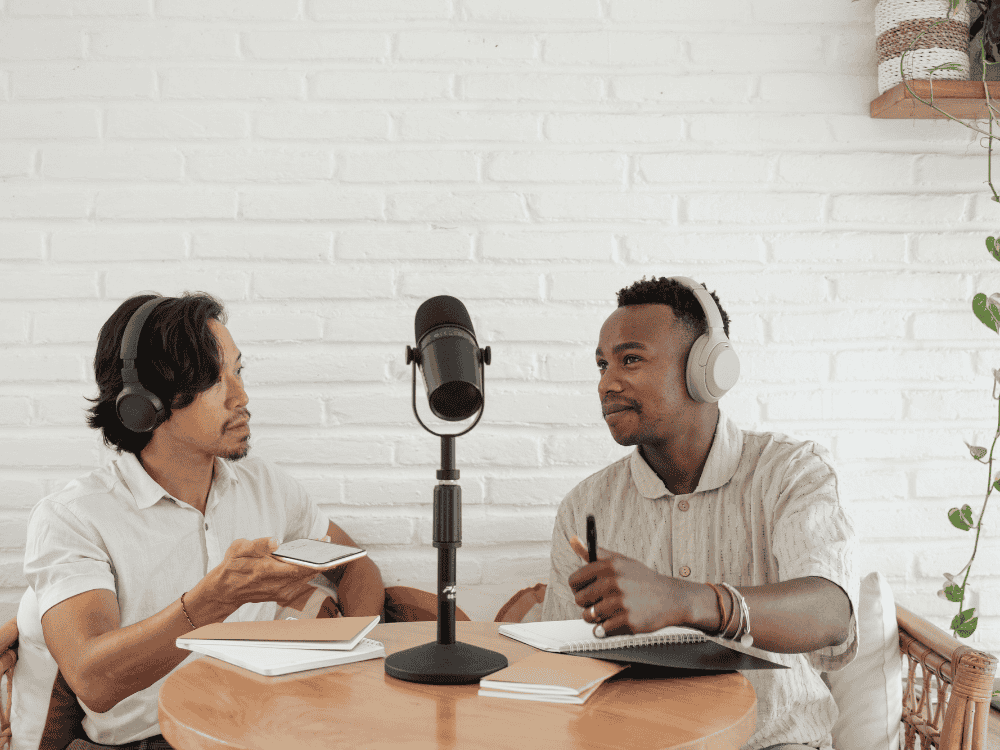Your podcast is packed with compelling content, but one simple tool can make the difference between sounding amateur and professional: the mic pop filter. This small, often overlooked accessory is key to delivering crystal-clear audio that keeps your listeners hooked. Let’s dive into why this humble piece of gear is essential for every podcaster aiming for studio-quality sound.
What is a Mic Pop Filter and How Does It Look Like?
A mic pop filter is an essential tool for any podcaster or vocalist aiming to achieve high-quality audio recordings. Typically, a pop filter is a thin, circular screen made from a woven nylon mesh or metal, placed between the microphone and the speaker. It is usually mounted on a flexible arm, allowing for easy positioning in front of the microphone. The filter can range in size and design, but the fundamental purpose remains consistent: to prevent unwanted noise from plosive sounds like 'p', 't', and 'b'. These plosive sounds occur when bursts of air hit the microphone's diaphragm directly, causing distortion and a noticeable pop in the recording. By diffusing these air bursts, the pop filter helps maintain clarity and professionalism in audio recordings.
The Purpose of a Mic Pop Filter
The primary purpose of a mic pop filter is to improve the quality of your audio recordings by minimizing plosive sounds that can be disruptive and unprofessional. In podcasting, clear and consistent audio is paramount, and even minor disruptions can distract listeners. A pop filter acts as a barrier, softening the force of the speaker's breath and allowing only the intended sound waves to pass through to the microphone. This results in smoother, more polished recordings that require less editing in post-production. For podcasters, who often speak directly into the microphone for extended periods, a pop filter is a simple yet powerful tool to enhance the overall sound quality.
When Recording a Podcast Using a Condenser Microphone on a Scissor Arm Stand with a Pop Filter, How Should the Mic Be Oriented?
When recording a podcast with a condenser microphone on a scissor arm stand, orientation plays a critical role in capturing the best audio quality. The microphone should be positioned so that the front, or the side with the brand logo, is facing the speaker. Condenser microphones are typically more sensitive and designed to pick up sound from a specific direction, usually from the front. The pop filter should be placed approximately 2-4 inches in front of the microphone, at a slight angle, to catch any plosive sounds before they reach the mic. This setup ensures that the sound is directed toward the microphone’s diaphragm while the pop filter for mic diffuses any unwanted air bursts. The height and distance of the microphone should be adjusted so that it is level with the speaker's mouth, ensuring a clear and consistent recording.
What Does a Pop Filter Do on a Mic? What is Considered the Best Mic Pop Filter?
A pop filter's primary function is to prevent plosive sounds from distorting the audio. When you speak, certain sounds like 'p' and 'b' produce a burst of air that can cause an unpleasant pop noise in recordings. A pop filter diffuses these air bursts, ensuring that only the intended sound waves reach the microphone, resulting in a cleaner, more professional sound. The best mic pop filter is one tool that can offer high-quality materials, adjustable positioning, and compatibility with a variety of microphones. Nylon mesh pop filters are commonly used due to their ability to effectively diffuse air without affecting the overall sound quality. Metal pop filters, while slightly more expensive, offer enhanced durability and are often preferred for professional studio settings.
Does a Dynamic Mic Require a Pop Filter?
Dynamic microphones are generally less sensitive than condenser microphones, meaning they are less prone to picking up plosive sounds. However, this does not mean that a pop filter is unnecessary for dynamic mics. While a dynamic microphone may naturally resist plosive sounds to some extent, using a pop filter can still provide an extra layer of protection, particularly if the microphone is used for close-up vocal recordings. In podcasting, where clarity and consistency are crucial, a pop filter can help maintain a smooth sound, even when using a dynamic microphone. It’s especially useful if the speaker tends to emphasize plosive sounds or if the microphone is positioned close to the mouth. Consider Maono’s PD400X dynamic mic with pop filter–
Do You Need a Pop Filter for a Condenser Mic?
Yes, a pop filter is highly recommended when using a condenser microphone. Condenser mics are known for their sensitivity and ability to capture detailed sound, making them popular for podcasting, voiceovers, and studio recording. However, this sensitivity also means they are more susceptible to plosive sounds and other unwanted noises. A pop filter helps manage these issues by diffusing the air before it reaches the microphone, allowing the condenser mic to capture clear, precise audio without the interference of popping sounds. Using a pop filter with a condenser microphone ensures that your recordings remain clean and professional, with minimal need for post-production editing. For instance, the Maono DGM20 GamerWave condenser microphone comes with a pop filter.
How Far Should a Pop Filter Be from a Mic?
The ideal distance between a pop filter and a microphone is typically around 2 to 6 inches. This distance allows the pop filter to effectively diffuse plosive sounds while still allowing your voice to be captured clearly by the microphone. If the pop filter is too close to the microphone, it may not effectively prevent air bursts, and if it’s too far, it may reduce the overall volume and clarity of the recording. Adjusting the distance based on the speaker’s volume and the microphone’s sensitivity can help achieve the best results. In podcasting, where maintaining consistent audio levels is key, finding the right distance can make a significant difference in the quality of the recording.
What’s the Difference Between a Pop Filter and a WIndscreen?
A pop filter and a windscreen serve different purposes in audio recording, though both aim to improve sound quality by reducing unwanted noise.
- Pop Filter: Typically made of a thin mesh or nylon, a pop filter is placed in front of a microphone to reduce or eliminate plosive sounds, such as "p" and "b" consonants, that create bursts of air. These bursts can cause distortion and overload the microphone, leading to an unpleasant popping sound in recordings. Pop filters are essential in studio settings, especially for vocal recordings, as they help ensure clarity by filtering out these plosives.
- Windscreen: A windscreen is a foam or furry cover that fits over the microphone to reduce wind noise and other environmental sounds when recording outdoors. Windscreens are designed to protect the microphone from wind interference, which can cause rumbling or distortion. They are often used in field recording, outdoor broadcasting, and live events.
In summary, while a pop filter is primarily used to control plosive sounds in vocal recordings, a windscreen is used to block wind noise and is more common in outdoor settings.
6 Best Mic Pop Filters
1. Maono PF150F Pop Filter

The Maono PF150F is a popular choice among podcasters for its dual-layered nylon mesh, which provides excellent plosive protection without compromising sound quality. Its flexible gooseneck allows for easy positioning, and it is compatible with most standard microphones. This pop filter is also budget-friendly, making it an excellent option for beginners and professionals alike.
2. Aokeo Professional Microphone Pop Filter
This pop filter offers a dual-layer design, combining a fine mesh with an additional foam layer for enhanced protection against plosive sounds. The Aokeo filter is highly durable, featuring a sturdy metal frame and a flexible arm for easy adjustment. It’s well-suited for both condenser and dynamic microphones, making it a versatile choice for podcasters.
3. Blue The Pop Universal Pop Filter
Designed by Blue, a well-known name in the microphone industry, The Pop Universal Pop Filter is built to deliver professional-grade plosive protection. It features a solid metal construction and a single-layer mesh that balances sound clarity with effective air diffusion. This pop filter is particularly recommended for use with Blue’s range of microphones but is compatible with other brands as well.
4. Stedman Proscreen XL
The Stedman Proscreen XL is a high-end pop filter that uses a unique metal screen to effectively redirect air away from the microphone. Unlike traditional nylon mesh filters, the Stedman Proscreen XL allows more sound to pass through while still eliminating plosives, resulting in clearer recordings. This premium filter is favored by professionals who require top-tier audio quality.
5. Nady MPF-6 Pop Filter
The Nady MPF-6 is an affordable yet effective pop filter that features a dual-layer mesh screen and an adjustable gooseneck arm. Its simple design and ease of use make it a great option for beginners and those on a budget. Despite its low price, the Nady MPF-6 provides reliable plosive protection and is compatible with a wide range of microphones.
6. Maono PD400X Replaceable Foam Windscreen

The Maono PD400X foam windscreen is designed to fit snugly over the PD400X microphone, providing effective protection against wind noise, plosives, and other unwanted sounds during recordings. Made from high-density foam, it helps to improve audio clarity by minimizing interference, making it ideal for podcasting, broadcasting, and live streaming. Additionally, it comes in a convenient pack of five, offering extra replacements for long-term use.
FAQs
1. How Does the Maono Pop Filter Impact Your Audio Recordings for Podcasts?
The Maono pop filter significantly enhances audio recordings by reducing plosive sounds that can distort your podcast's quality. Its dual-layer mesh design ensures that air bursts from speech do not reach the microphone, resulting in clearer and more professional-sounding recordings. For podcasters who prioritize sound quality, the Maono pop filter is an excellent tool to maintain consistency in audio production.
2. How Durable is Maono's Mic Pop Filter?
Maono’s mic pop filters are known for their durability, thanks to their robust construction and high-quality materials. The flexible gooseneck is designed to withstand frequent adjustments, while the dual-layer mesh is resistant to wear and tear. With proper care, a Maono pop filter can last for years, making it a cost-effective addition to your podcasting setup.
3. What Recording Environments Do You Use Your Mic Pop Filter In?
Mic pop filters are versatile tools that can be used in various recording environments, including home studios, professional studios, and on-the-go setups. They are particularly useful in environments where close-miking is required, such as podcasting, voiceovers, and vocal recording sessions. Whether you’re recording in a quiet studio or a less controlled environment, a pop filter ensures that plosive sounds are minimized, resulting in cleaner recordings.
Conclusion
A mic pop filter is an indispensable accessory for podcasters and anyone involved in vocal recording. It serves the crucial function of reducing plosive sounds that can disrupt your audio quality, ensuring a smooth and professional sound. Whether you're using a condenser or dynamic microphone, a pop filter can enhance your recordings by providing clear, consistent audio with minimal post-production editing required. With various options available, from budget-friendly models to professional-grade filters, finding the right pop filter for your needs can significantly improve your podcasting experience. Investing in a high-quality pop filter, like those from Maono, Stedman, or Blue, can elevate your recordings and help you produce content that stands out in the crowded podcasting landscape.



